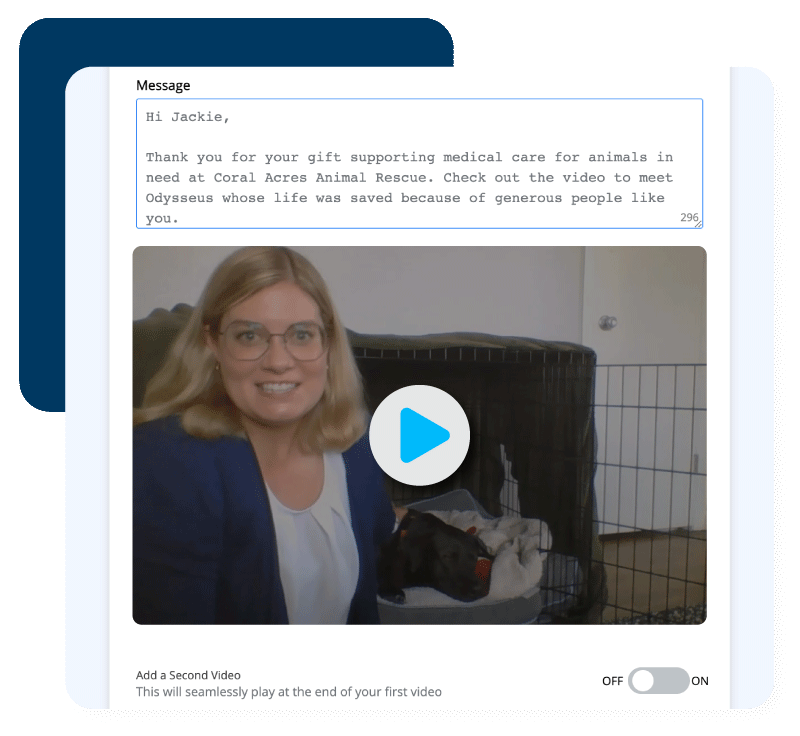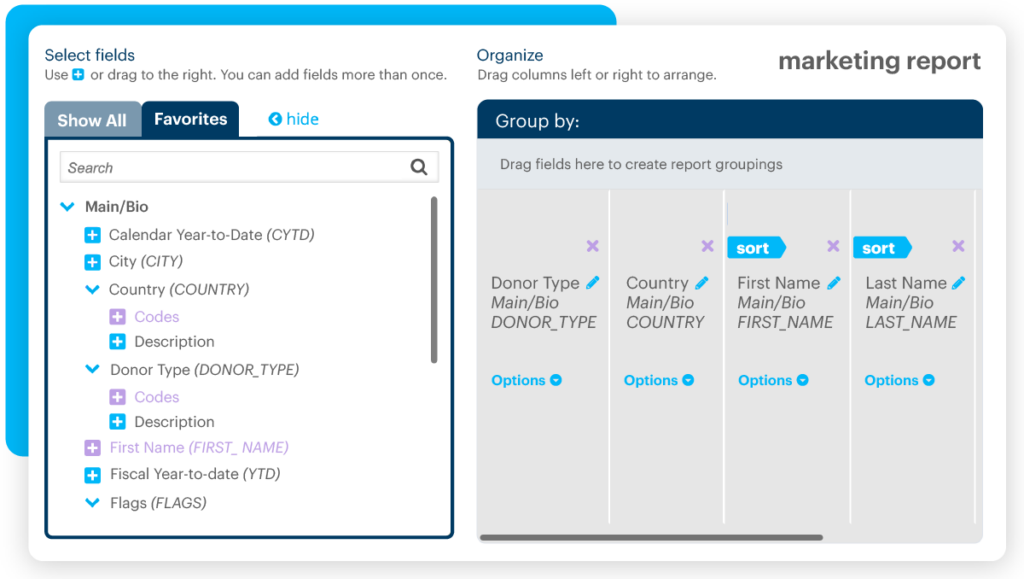Nonprofit Technology & Fundraising Blog
Subscribe to our mailing list

July 11, 2025 | Donor Engagement, Fundraising Operations, Major Donors, Planning
Where passion meets purpose, fundraising is too often reduced to one narrow moment: the ask. But what if that’s the least important part of the process? When it comes to nonprofit board engagement, the traditional focus on fundraising can be both a blessing and a burden. Development professionals often face the challenge of inspiring nonprofit board members to contribute meaningfully, without overwhelming them or inadvertently scaring them off.

In a recent episode of Nonprofit Expert presented by DonorPerfect, host Robbe Healey sat down with veteran fundraiser and consultant Andrea McManus to explore how assumptions, relationship-building, and respect play pivotal roles in elevating nonprofit board engagement. Their conversation offers a roadmap for development professionals, executive leaders, and board members alike who want to reframe what it truly means to be engaged.
Andrea McManus challenges one of the most common assumptions in nonprofit leadership: that the nonprofit board is a single entity. Instead, she suggests that development professionals should shift their perspectives and treat board members as individuals.
“We look at the board as a collective rather than individual board members,” McManus notes. “We’re really obligated to find the best working relationship with each one.”
She encourages reframing fundraising as a process, one where relationship-building, thank-you calls, donor stewardship, and door-opening are equally valuable.
This mindset shift does more than improve communication; it empowers nonprofit board members to contribute in ways that align with their strengths and comfort levels. Not everyone wants, or needs, to ask for money.
Instead, board members can be asked to:
This individualized approach allows board members to see themselves as capable and valued, regardless of whether or not they’re comfortable with fundraising in the traditional sense. It also strengthens their personal connection to the mission, which is essential for long-term involvement and stewardship.
Have board members who are more comfortable behind the camera than in person? DP Video makes it easy to send personalized, impactful video messages and thank-yous to your donors.

Traditionally, fundraising has been framed as a governance responsibility. But McManus offers a more nuanced take:
“Boards don’t have a governance obligation to fundraise. They have a governance obligation to ensure the organization is worthy of philanthropic support.”
This distinction is vital. It reframes the board’s role from one of solicitation to one of stewardship and accountability.
Nonprofit boards should focus on ensuring that the organization is:
If the board fulfills these core responsibilities, fundraising becomes more natural and effective because donors trust that their contributions will be well stewarded. This also frees development professionals to tailor their approach to each board member, enabling more authentic and productive collaborations.
If engagement is about more than just raising money, how can organizations set their board members up for success?
McManus shares a compelling story from her work with Alberta Theatre Projects. During a season launch event, she gave board members a list of guests to simply greet and thank, without any pitches or pressure.
“It was the first time they’d been given something concrete to do… and we got a number of good leads out of that.”
What made this work? Preparation. Before the event, McManus had one-on-one conversations with each board member to learn about their background, comfort level, and experience with fundraising. By the time the event came around, they were primed and ready.
This preparation helps build trust and comfort. It also allows development professionals to make tailored asks that align with each member’s unique strengths. Over time, these small wins build confidence, which can lead to deeper and more visible involvement in donor engagement.
Make it easy to prepare your board for big events by giving them the donor information they need. DonorPerfect offers comprehensive donor history reports so a board member can easily assess a donor’s background and involvement with your organization.

The words we use shape our perceptions and expectations. McManus emphasizes the importance of language in nonprofit board recruitment and engagement. Rather than centering the conversation on fundraising, she encourages focusing on philanthropy and the broader impact of giving.
“Fundraising is what we do. Philanthropy is our outcome.”
By focusing on outcomes rather than actions, nonprofit leaders can present board service as a holistic opportunity to advance the mission. This also makes it easier to have honest conversations about expectations. For example, asking a board member to make your organization one of their top three philanthropic priorities sounds very different than simply saying, “We expect you to give.”
This linguistic shift also sets a tone of trust and respect. It shows that nonprofit board members are not merely being recruited for their wallets, but because they believe in the mission and are ready to contribute meaningfully.
A powerful theme in the conversation was the role of storytelling and who gets to tell the story. McManus pushes back against the idea that involving individuals with lived experience in donor presentations is inherently exploitative.
“It’s arrogant of us to assume the motivations or wishes of other people.”
She recalls a formative experience early in her career when she proposed a fundraising campaign that invited clients of a paratransit service to contribute to the purchase of a new bus. Initially, the idea was rejected as inappropriate, but after further discussion and reframing, the campaign moved forward and raised $25,000 in less than a year.
“We had people thanking our drivers for treating them with dignity, for giving them the opportunity to contribute if they so chose.”
This example shows the importance of empowering people, not protecting them to the point of exclusion. When individuals are given the choice to participate, they often feel honored to do so. The same principle applies to frontline staff, who can be powerful advocates for the organization when invited to share their passion and experience in front of potential donors.
Board engagement doesn’t happen in a vacuum.
McManus reflects on how the life stage of an organization affects its board culture:
Understanding where your organization falls within this lifecycle can help you tailor your approach to board development. During high-growth periods, the emphasis might be on structure and sustainability. During renewal, the focus might be on rebuilding trust and reinvigorating the board with purpose.
Nonprofit leaders should assess these dynamics regularly and adjust strategies accordingly, ensuring that board engagement remains relevant and energizing.
One of the most pragmatic takeaways from the podcast is the call for transparency in nonprofit board recruitment. Too often, organizations shy away from discussing fundraising or engagement during the recruitment process out of fear that it will scare candidates off.
But McManus is clear:
“If we aren’t transparent… that’s bait and switch. Why would they trust you?”
Instead, she advocates for job descriptions that spell out expectations, including engagement in the fundraising process. But crucially, she recommends framing this involvement around relationships, storytelling, and philanthropic impact, not just the act of asking for money.
Being honest from the outset allows candidates to opt in with full knowledge and builds a stronger foundation of trust. And if someone opts out? Let them do so with dignity. The right people will appreciate the clarity and rise to the occasion.
Both McManus and Healey agree that the nonprofit sector is shifting from transactional fundraising to relationship-driven philanthropy. Yet some outdated assumptions persist, including the harmful notion that donors are simply ATMs.
“We are complicit in setting that perspective,” McManus notes. “Or tolerating it.”
This is a call to action for development professionals and nonprofit leaders: We must lead the shift. We must model language, expectations, and relationships that reflect respect and long-term thinking. And we must build cultures where board members, staff, donors, and clients are all recognized as contributors to the organization’s success.
If your nonprofit board engagement strategy hasn’t evolved in the past five years, it’s time for a refresh. Begin by redefining what it means to be engaged, and commit to treating board members as partners in philanthropy.
When you do, you’ll find that the path to sustainable funding, deeper relationships, and mission advancement becomes not only more successful but more joyful for everyone involved.
Ready to turn your board members into mission-driven ambassadors?
Building a Board of Ambassadors: A 6-Step Guide by Joan Garry and DonorPerfect
Follow us on social!